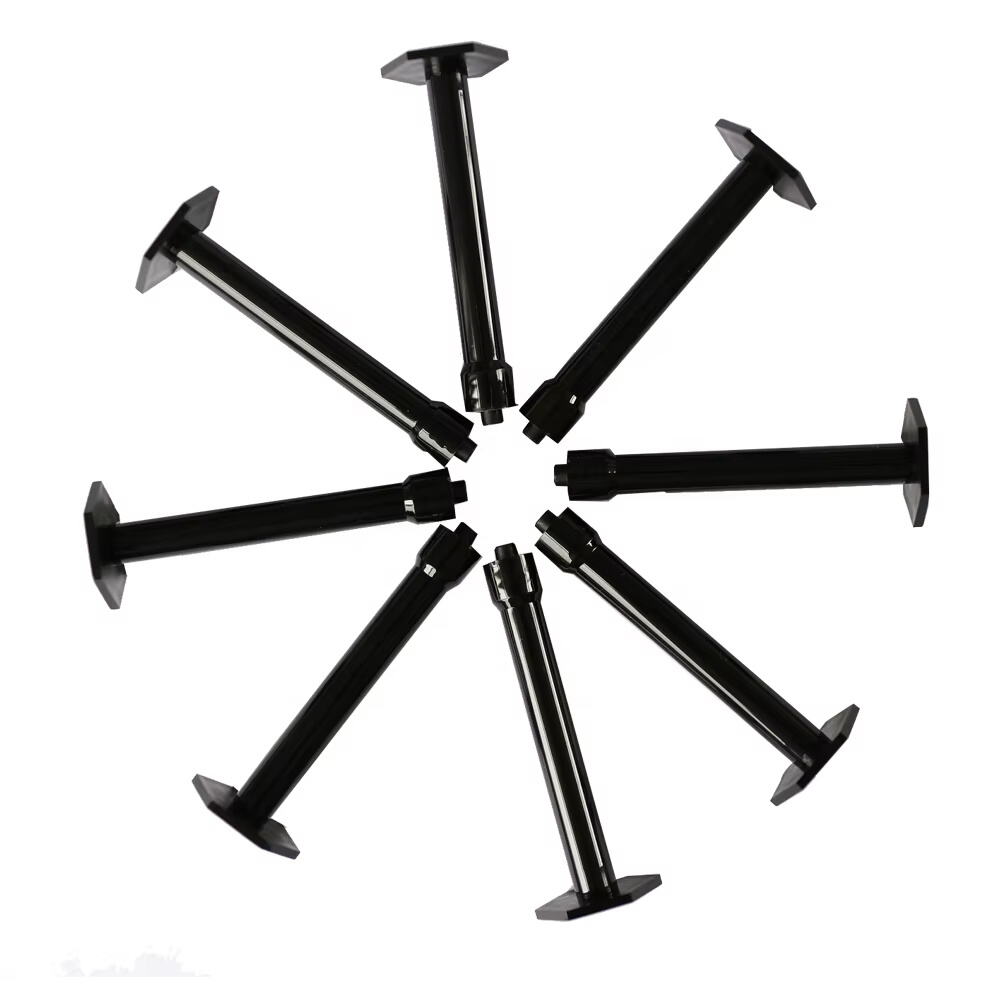Introduction to Choosing Materials for Medical Plastic Injection Molding
Choosing the right materials for medical plastic injection molding really matters for how safe and effective medical devices end up being. After all, these plastics often come into contact with our bodies, so getting this part right helps stop bad reactions and keeps patients safe. Take it from someone who's worked in this field for years - picking the wrong stuff can lead to serious problems down the road. The last thing anyone wants is chemicals leaching out or causing issues once they're inside a person's system. That's why so much attention goes into material selection during production planning stages.
Material choices matter a lot when it comes to both keeping patients safe and getting products approved by regulators. The FDA has pretty strict rules about what goes into medical devices, basically requiring everything to be free from toxins and stuff that might cause allergic reactions. Following these rules isn't just good practice either they're mandatory requirements that designers need to consider right at the beginning stages. Many companies have had their products delayed or rejected simply because they didn't pick materials properly during development.
The choice of materials affects far more than just how something works it shapes every stage from production all the way through to disposal costs and environmental impact. A lot of manufacturers are starting to look at greener options these days because they see where the whole sector is heading environmentally speaking. Take medical plastic injection molding as an example this area is booming fast. Some reports predict it could hit around $148 million by 2030 or so. With numbers like that, there's no doubt we'll keep seeing more focus on finding materials that balance both green credentials and reasonable prices for businesses looking to stay competitive while cutting down their carbon footprint.
Common Medical-Grade Plastics for Injection Molding
Polypropylene (PP): Lightweight and Chemical-Resistant
The medical field really likes polypropylene because it resists chemicals so well and doesn't weigh much at all. That's why we see it everywhere from sterile packaging to single use items in hospitals. The stuff is light but tough, holding up against pretty much anything thrown at it chemically speaking. What makes polypropylene stand out even more is how it handles constant movement without breaking down. Some research shows this material can take a beating over time, which matters a lot for things like packaging that gets handled repeatedly during transport or storage. Doctors and nurses appreciate materials that just keep working despite all the wear and tear they encounter daily.
Polycarbonate (PC): High-Strength and Transparent
Polycarbonate stands out because it's really strong yet completely transparent, which is why doctors and technicians rely on it so much when they need to see through things during operations or diagnostics. What makes this material so valuable is how tough it actually is against impacts. Surgical tools made from polycarbonate don't crack or break easily even when dropped or bumped around in busy hospital environments. That kind of resilience translates directly into safer practices for everyone involved. Because of these properties, most manufacturers prefer polycarbonate whenever their medical equipment needs to be both long lasting and see through at the same time.
Polyethylene (PE): Flexible and Biocompatible
Polyethylene stands out because it's flexible and works well with body tissues, which makes it great for things like catheters or IV bags that touch patients directly. What really helps this material shine in healthcare settings is how it handles different ways of sterilizing equipment. It can take ethylene oxide treatment or even gamma radiation without breaking down, something not all plastics can do. That's why hospitals and clinics keep turning to polyethylene when they need trustworthy packaging solutions. The combination of these characteristics means doctors and nurses can rely on products wrapped in polyethylene to stay safe and effective during critical treatments.
PVC and TPE: Ideal for Tubing and Seals
Flexible tubing and seals commonly rely on materials like Polyvinyl Chloride (PVC) and Thermoplastic Elastomers (TPE) thanks to how well they seal and adapt to different conditions. Manufacturers frequently go with PVC when budget matters most since it's pretty versatile stuff that works across numerous applications in healthcare settings. Meanwhile, TPE brings something special to the table with its rubbery feel and soft texture. This makes all the difference in medical devices where patients need to wear things comfortably for extended periods. Think catheters or wearable monitors where comfort meets function head on without sacrificing performance requirements.
Key Factors in Material Selection for Medical Devices
Biocompatibility: Ensuring Safety for Human Use
When picking out materials for medical devices, biocompatibility stands as one of the most important factors to consider. The goal here is simple enough: we need materials that won't set off allergic reactions or cause problems once they're inside someone's body. To ensure this happens, there are strict rules in place following ISO 10993 standards. These guidelines basically test how safe different materials really are when placed within living tissue. For things that stay in the body for extended periods, certain materials tend to work better than others. Silicone comes to mind right away, along with some special types of polyurethane that have shown good results over time. Doctors and engineers rely heavily on these properties when deciding what goes into patients. After all, nobody wants complications from something meant to help them heal.
Sterilization Resistance: Withstands Heat, Chemicals, and Radiation
Sterilization resistance remains critical for medical devices to keep them both safe and working properly from production through their whole life span. The materials used need to hold up against various sterilization methods including steam autoclaving, ethylene oxide gas, and gamma radiation without breaking down or losing what makes them work. When picking materials that stay strong through all this treatment, it becomes one of those make-or-break decisions for manufacturers, especially when dealing with parts that have to comply with tough cleanliness regulations. Medical device companies spend a lot of time testing how different materials react to repeated sterilizations because if something fails here, patient safety goes out the window along with regulatory compliance.
Mechanical Properties: Strength, Flexibility, and Wear Resistance
When looking at materials for medical devices, their mechanical properties matter a lot. Strength, flexibility, and how they handle wear all determine if a material works for the job. Materials need to stand up to physical stress, especially when devices get used over and over again. Take orthopedic implants for instance. These require strong polymers that won't break down under constant pressure from body weight. Engineers don't just guess about material choices either. They run lots of computer models, like finite element analysis stuff, to see what happens when different forces act on materials in real world situations. This whole testing approach helps make sure the materials actually perform as needed and last long enough in patients' bodies without failing unexpectedly.
Conclusion
Picking suitable materials for medical plastic injection molding makes all the difference when it comes to making safe, functional medical equipment that meets regulations. Material choices aren't just about what works on paper; manufacturers need to consider how well these plastics interact with human tissue (biocompatibility), their ability to withstand stress without breaking down, and whether they can handle repeated sterilization cycles without degrading. Hospitals and clinics rely heavily on these properties because substandard materials could lead to device failures during critical procedures. That's why most reputable manufacturers spend considerable time testing different options against strict FDA guidelines before finalizing production runs.
For medical device makers, finding the sweet spot between costs and what their products actually need to do is pretty critical. Getting this mix right helps keep supply chains running smoothly while still hitting those tough requirements set by the healthcare sector. When companies pick materials wisely, they stay within all the regulations but also make sure their devices work well in real world situations. Better materials mean better results for patients, which ultimately keeps trust alive in the whole medical field. Most manufacturers know this isn't just about saving money either it's about making sure everything functions properly when lives are on the line.
FAQ
What factors should be considered when selecting materials for medical plastic injection molding?
When selecting materials for medical plastic injection molding, consider factors such as biocompatibility, sterilization resistance, mechanical properties, regulatory compliance, and cost-effectiveness.
Why is biocompatibility important in material selection for medical devices?
Biocompatibility is crucial because it ensures that the material does not cause adverse reactions or allergies when in contact with human tissue, ensuring patient safety.
What role do regulations play in the selection of materials for medical devices?
Regulations, like those enforced by the FDA, ensure that materials are safe, non-toxic, and non-allergenic. Compliance is essential to meet safety standards and regulatory approval.
How do mechanical properties influence material choice?
Mechanical properties such as strength, flexibility, and wear resistance determine how well a material can withstand mechanical stress, impacting the durability and functionality of medical devices.
What is the importance of sterilization resistance in medical device materials?
Sterilization resistance ensures that materials can endure sterilization processes without losing integrity, maintaining safety and functionality throughout the device's lifecycle.
Table of Contents
- Introduction to Choosing Materials for Medical Plastic Injection Molding
- Common Medical-Grade Plastics for Injection Molding
- Key Factors in Material Selection for Medical Devices
- Conclusion
-
FAQ
- What factors should be considered when selecting materials for medical plastic injection molding?
- Why is biocompatibility important in material selection for medical devices?
- What role do regulations play in the selection of materials for medical devices?
- How do mechanical properties influence material choice?
- What is the importance of sterilization resistance in medical device materials?

